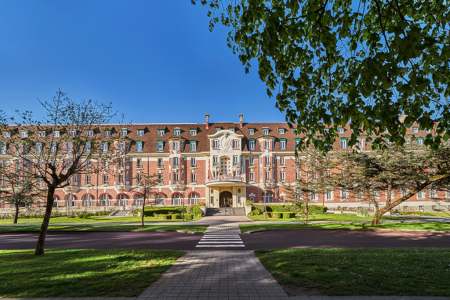Mark Bibby Jackson visits the beautiful German spa town of Baden-Baden and ends up on the tables with Marlene Dietrich.
Baden-Baden is bad; really bad – or at least it is in a Borat or Ally G sense of the word. It is so bad that even the number plates start BAD. That is how bad Baden-Baden is. The city so bad they named it twice, as Bill Clinton did not say when he visited the German spa town.
Now, one of the Unesco World Heritage Great Spa Towns of Europe, Baden-Baden became regarded as the ‘summer capital of Europe’ in the 19th century – well at least for the rich and famous. Baden means ‘to bathe’ in German. There is a theme.
History of Baden-Baden
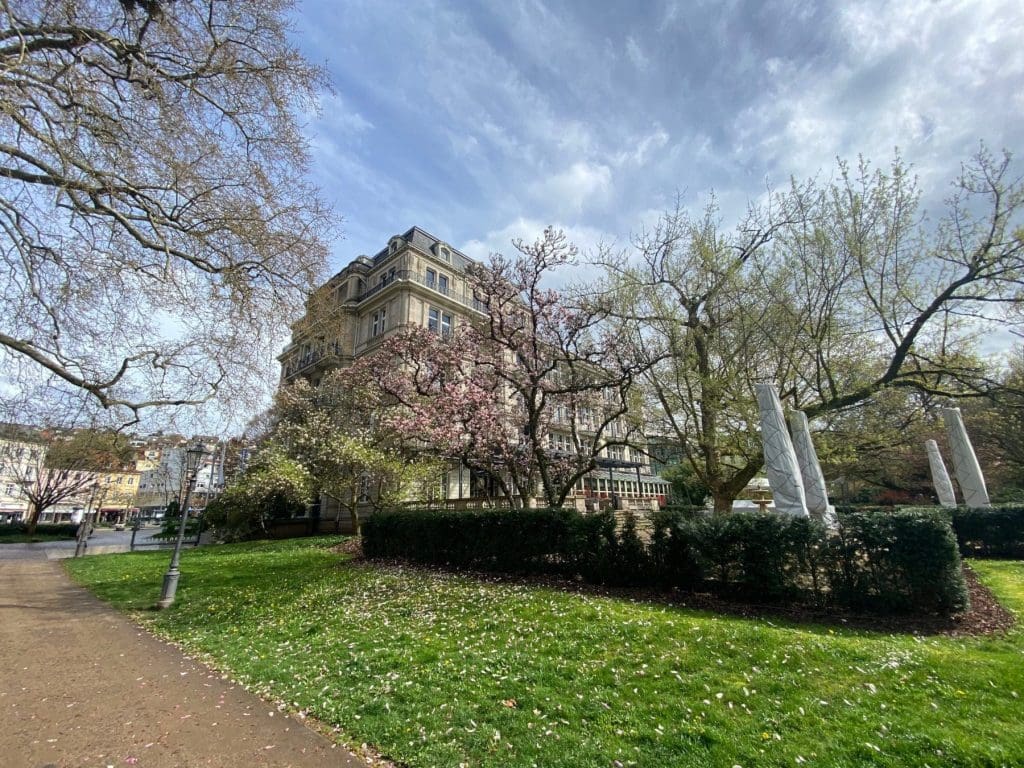
The city has been known for its therapeutic waters ever since the Roman Emperor Hadrian in the first century AD.
The ruins of the ancient Roman baths were discovered in the mid-19th century beneath the castle, and can be viewed. They were built in the reign of Caracalla who apparently came here to relief pain from his arthritis.
After that Baden-Baden fell into a period of decline until the Lichtenthal Convent (Kloster Lichtenthal) was founded in 1254.
However, it was not though until the late 18th century that the city really took off as a spa town, attracting wellness visitors long before the term was in vogue.
A Stroll through Baden-Baden
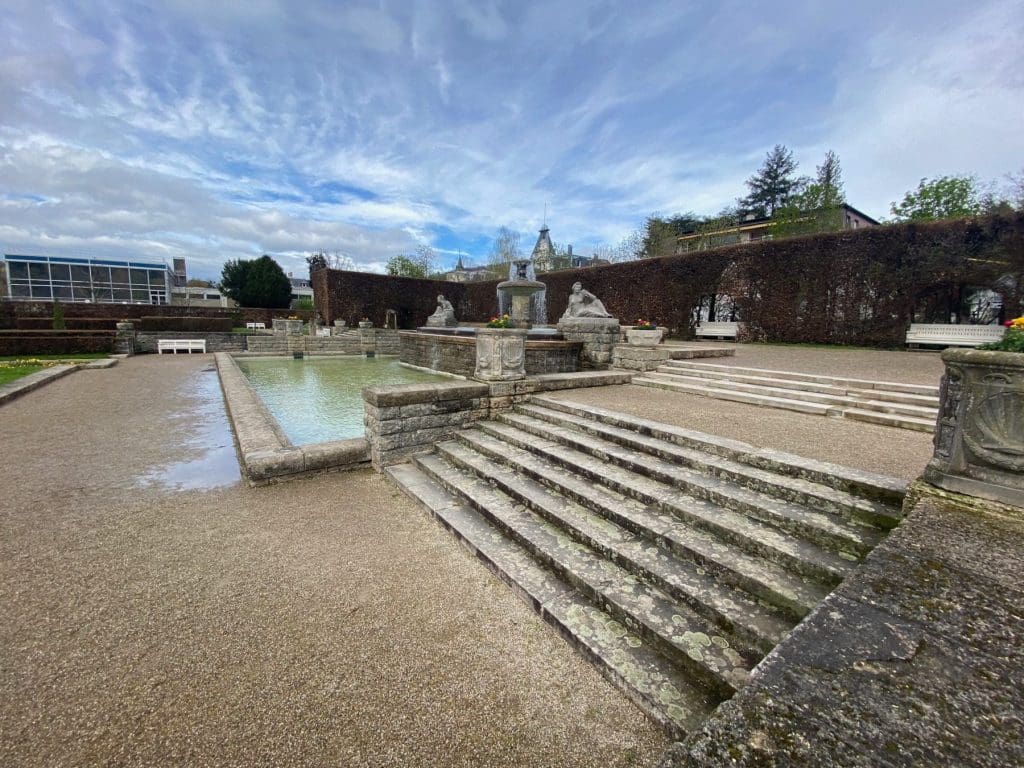
My city walk with our excellent guide Katarina starts in the beautiful art nouveau Gönneranlage gardens which were founded by coffee magnate Hermann Sielcken at the start of the last century.
The gardens have more than 400 types of roses and make for a great entry point to Lichtenentaller Allee, the traditional chestnut-lined route into the city that dates back to the mid-18th century when nuns used to stroll along the path from Lichtenthal Convent along the river Oos.
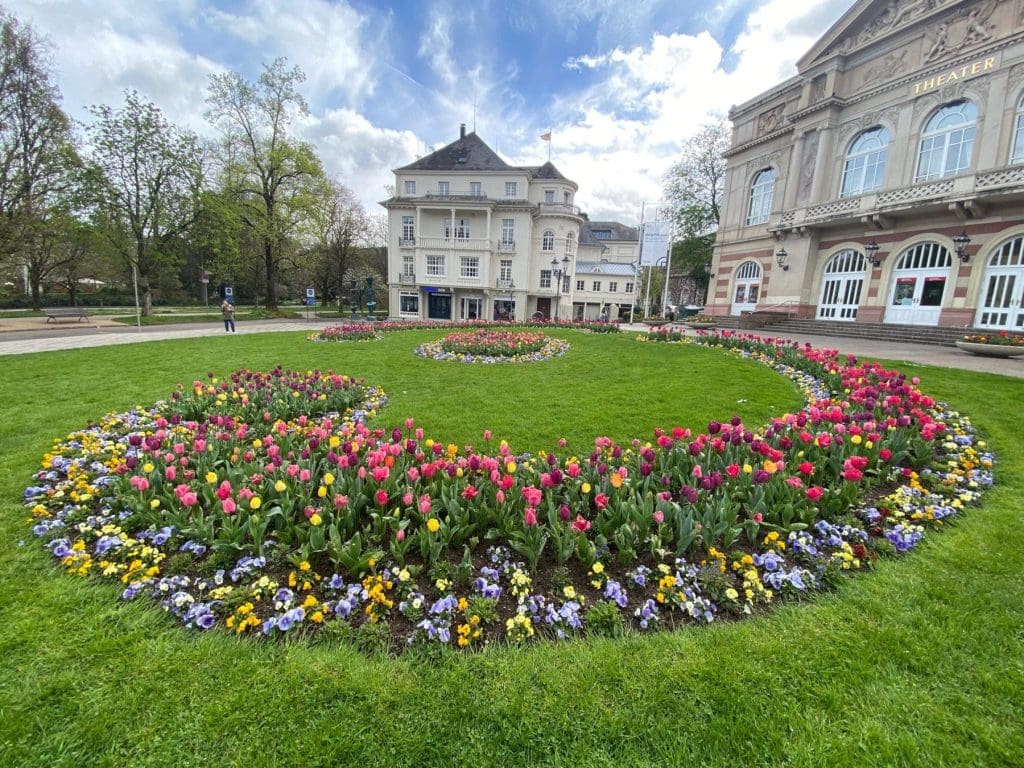
On our spring day the adjoining English Garden, is beautiful with spring flowers and magnolia trees in bloom. Like much of the city it is heavily influenced by the romantic views of the late 18th and early 19th centuries.
Across the small river is Brenners Park Hotel where the rich and famous have stayed, including the former US President who did say that Baden-Baden was so good they named it twice.
Lichtenentaller Allee leads to the centre of Baden-Baden, where the Baroque Theatre was built in the 1860s.
Next to it is the Kurhaus, literally the ‘curehouse’ but which according to Katarina was more the equivalent of the Bath Assembly Halls. The 1824 building was designed by Friedrich Weinbrenner, including the Corinthian columns and paired-griffins frieze of the grand entrance, as well as the neo-classical interiors.
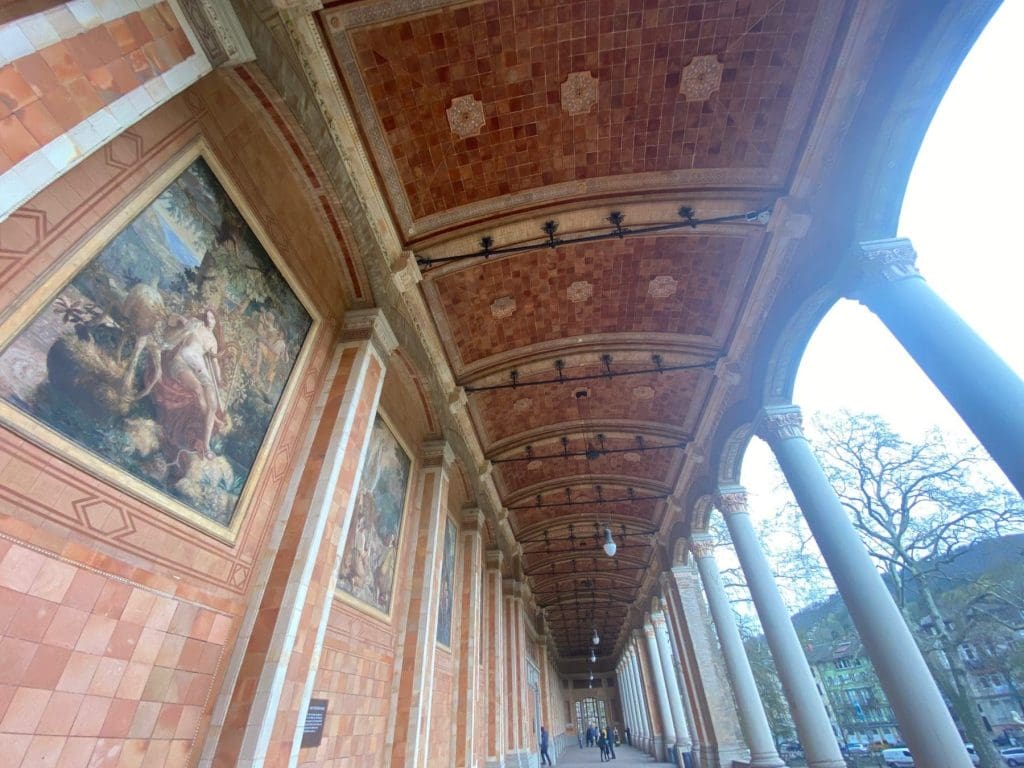
Just along from it is the 90-metre long Trinkhalle, with a statue of Kaiser Wilhelm I outside it. This long drinking corridor was created in 1842 with the idea that it was healthy to walk while you were drinking the waters. Elegant frescoes depicting episodes from local legend make this a very interesting corridor, even if you are not thirsty.
All of these buildings are in some way related to the success of the Casino, which is located in the Kurhaus, but more of that later. Due to its close proximity to France, it is hardly surprising that much of Baden-Baden’s architecture has a heavy French influence.
Old Baden-Baden and Spas
Although the central part of Baden-Baden has a distinct 19th century influence, just up the hill things are much older.
The heavens started to open as we journeyed back in time – clearly, not all water in Baden-Baden is therapeutic – and we had to dash for shelter in the recently restored Stiftskirche, which dates back to 987AD, and has outstanding stained glass, as well as a solid roof.
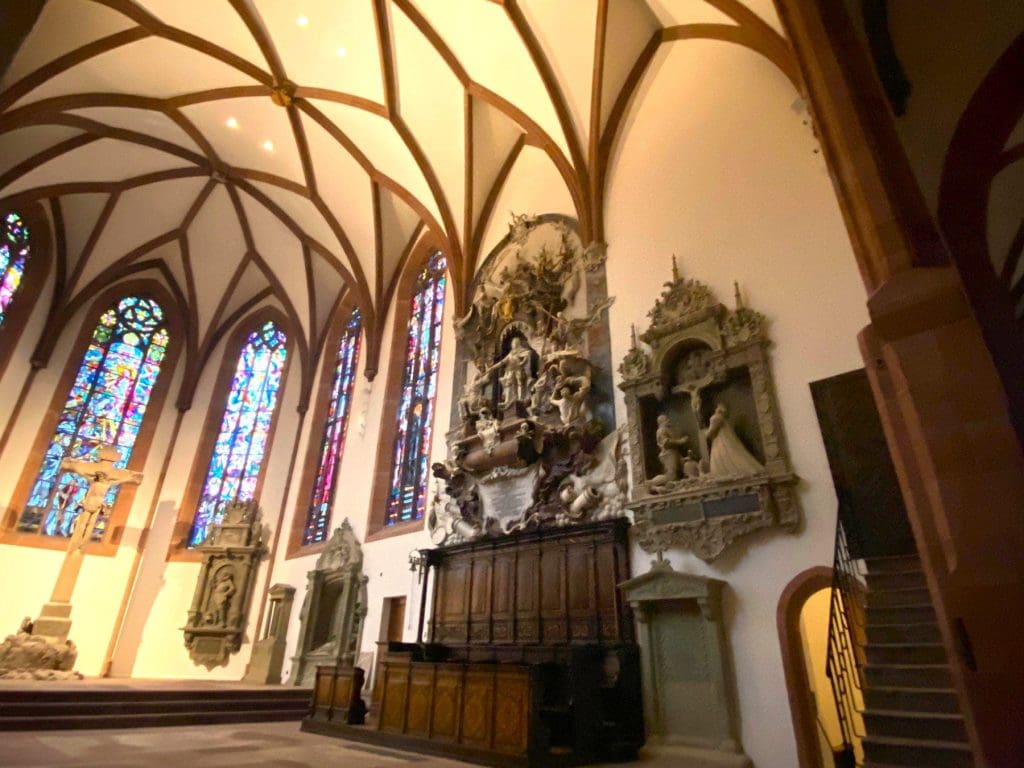
Stiftskirche lies in the old spa quarter of Baden-Baden in the old market place opposite the Town Hall. This has a plaque to another US President, Barack Obama in its courtyard. Above it looms Baden-Baden’s New Castle, which was the seat of the Margraves of Baden in the 15th century, although most of what you now see is 18th century. Black bricks on the floor around the church and castle mark where the Roman bath pools used to be.
The older Hohenbaden Castle was built around 1100 and was heavily damaged by a fire in 1599. You can visit its ruins just outside of Baden-Baden and enjoy the great views down to the city below, or use it as a point to set off for a hike into the neighbouring countryside.
Baden-Baden Spas
Baden-Baden has three spas, spanning the city’s history. The remnants of the original Roman baths are located beneath the stunning Friedrichsbad, Roman-Irish baths that were opened in 1877.
These are still in use, with a circuit of 17 different stations for you to enjoy the changing temperature of the thermal waters. Beware though clothing is prohibited and bathing mixed so expect a very natural experience.
Next to The Friedrichsbad is the contemporary Caracalla Spa, which covers 4,000sqm and has numerous pools, sauna and an outdoor area set in the picturesque castle gardens.
Casino Baden-Baden
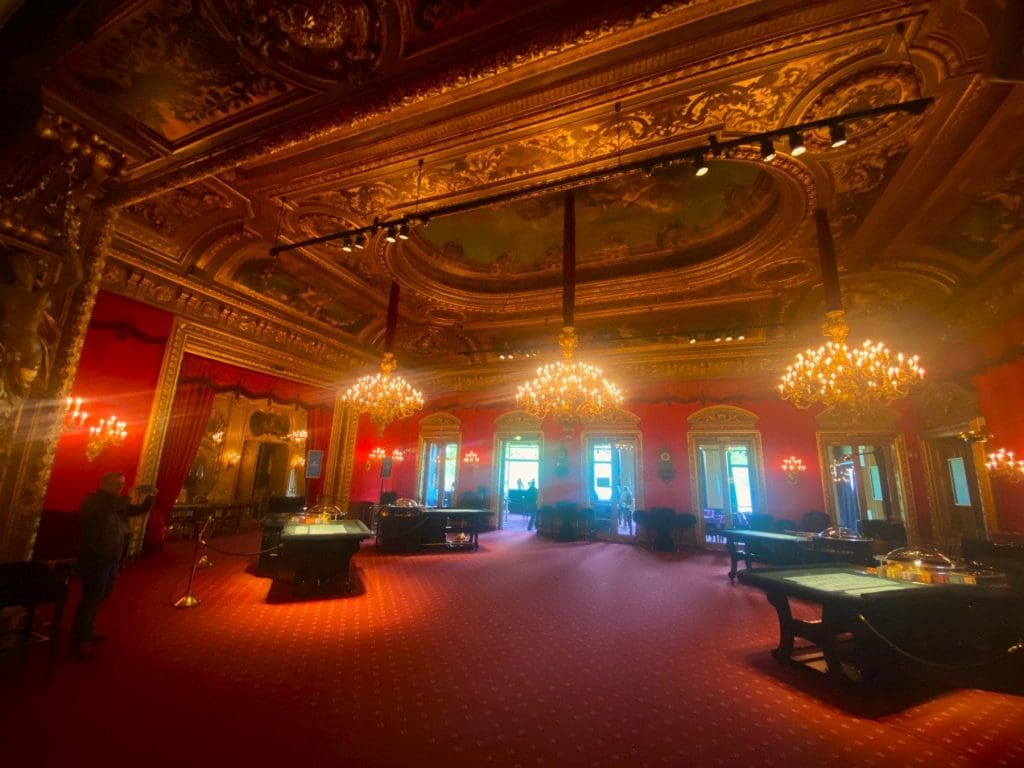
The Friedrichsbad was built during the period when gambling was prohibited by Bismarck. It reflected Baden-Baden’s need to offer something more to visitors than a roll of the dice.
Unfortunately, this was too late for Dostoyevsky who lost his fortune at the Casino Baden-Baden on a visit in 1863, which experience formed the basis for his novella The Gambler, published three years later. The Russian writer’s house is located close to The Friedrichsbad, where our tour concludes.
Baden-Baden was also featured in Tolstoy’s Anna Karenina (albeit under an alias) and Turgenev’s Smoke.
It is to the Casino Baden-Baden we return the following day after learning how to create a Black Forest Gateau at HECTORS next door to the Kurhaus.
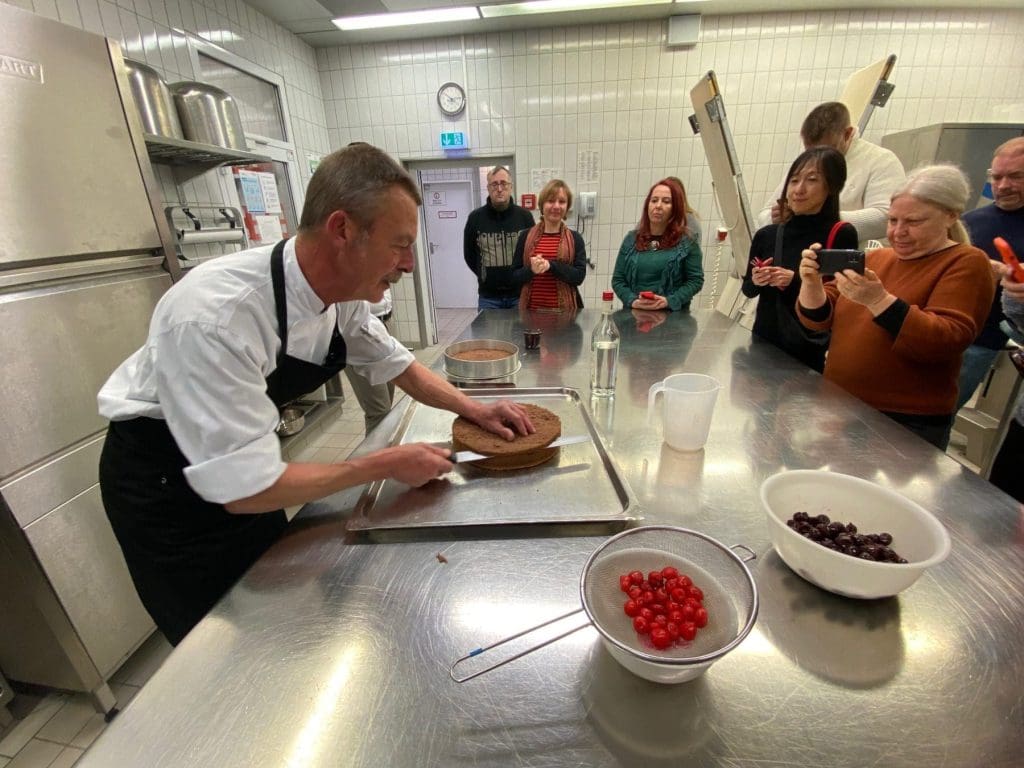
The previous evening we had dined at Geroldsauer Mühle, a restaurant set in an old saw mill, which has an emphasis on sustainable and local produce, as well as a market and accommodation. My spinach dumplings were excellent, especially washed down with the local dunkel beer.
The Casino-Baden Baden is located in the Kurhouse. Marlene Dietrich, someone not unfamiliar with having an occasional flutter, allegedly described it as the “the most beautiful casino in the world.”
Our tour took us around the various rooms that give an impression of what it must have felt like to have been here in the belle époque, when Baden-Baden used to be called Little Paris. The ban on gambling in France in the mid-1830s, a decade after Casino-Baden Baden’s construction, led to a mini-French invasion to the tables. One of the rooms is even called the Salon Madame Pompadour, with a Rococo interior and original Louis XV furniture.
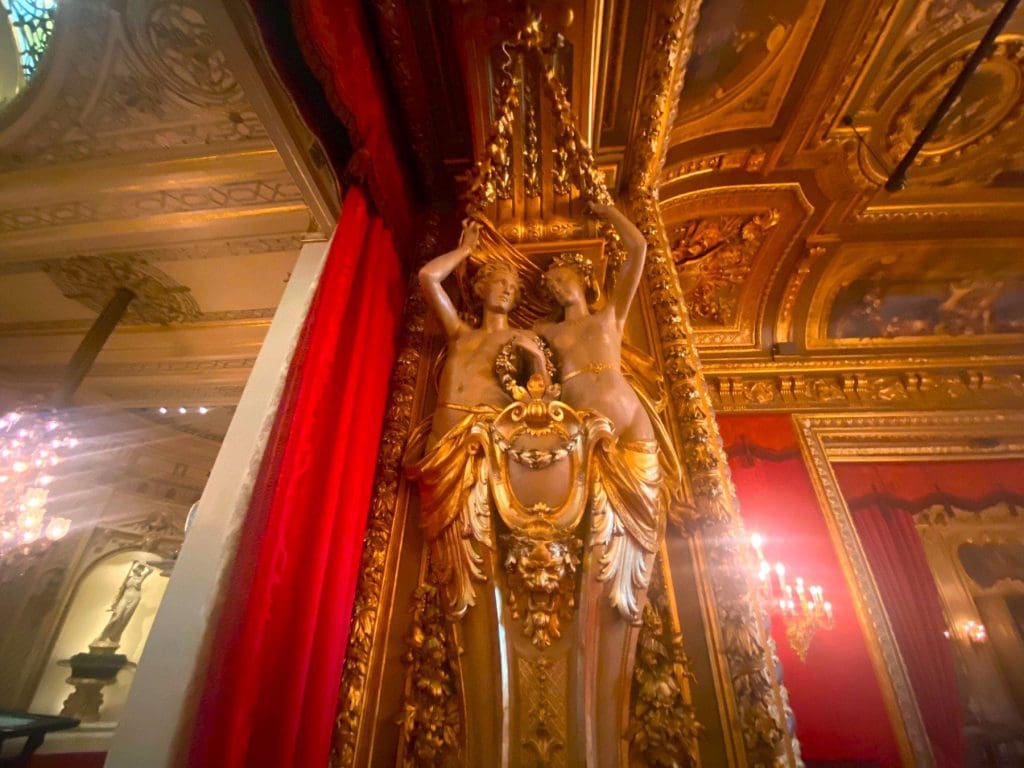
This really is a quite extravagant and beautifully designed building, although you could hardly accuse the designers of understatement. The Florentine Hall with its murals of fantasy gardens is particularly spectacular. It used to be the concert hall, and still holds occasional concerts. One room used to have a small theatre, where Marlene Dietrich performed, while not falling in love again with the spectacular design.
Well, perhaps not all things are that bad about beautiful-beautiful Baden-Baden after all, although perhaps Dostoyevsky might not have agreed.
Baden-Baden Things To Do
For more inspiration on what to do in Baden-Baden, visit the official Baden-Baden website.
Where to Stay in Baden-Baden
We stayed at the Leonardo Royal Hotel, which was a perfectly comfortable hotel, with an excellent breakfast.
All images: Mark Bibby Jackson.
